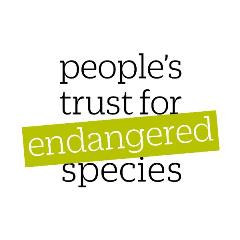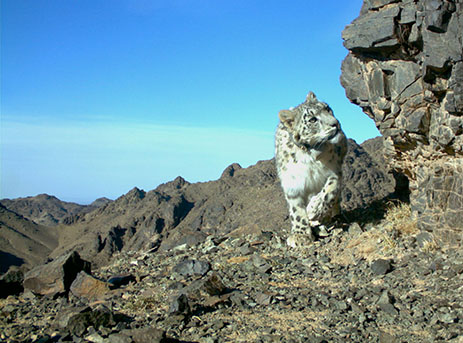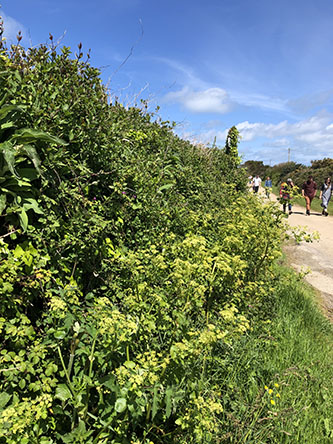People’s Trust for Endangered Species
This post is greater than 6 months old - links may be broken or out of date. Proceed with caution!

.%20Credit%20PTES.jpg)
by Jill Nelson, Chief Executive
It’s an absolute pleasure to be chosen as CJS’s charity for 2023.
I hardly need to rehearse with this audience the sad facts that almost two thirds of UK species have declined in the past 50 years and one in ten faces the risk of extinction. And that globally, between 10,000 and 100,000 species are becoming extinct every year. Given what each loss in our ecosystem represents, and our own dependence on biodiversity, the situation can seem overwhelming.
PTES is an international conservation charity, protecting endangered animals and their habitats. This worldwide remit is of course impossibly broad, so we specialise in certain areas to maximise our input. The unifying threads are the passion that drives our work and our conviction to follow the science.
Our approach is to inspire and enable thousands of people to help us, ranging from direct support for conservation professionals to involving the public and volunteers in practical action to help specific species and their habitats. Scientists, local communities, landowners, the public, volunteers and partner organisations all play a part. Solutions may come in many forms, such as advising landowners on habitat management or engaging with local communities to challenge attitudes and traditions.
The foundation for all of this is rigorous research, both to assess the need and urgency of the problem and to measure the impact of our work. By sharing our data and knowledge with others we ensure value for money and avoid duplication or unsustainable conservation action.

PTES has been around for 45 years. From the start we supported conservation research worldwide, investing in talented people to test the best ways to protect endangered species in their natural habitats. Today, for example, our Conservation Partnerships provide five-year support to talented conservationists with a track record of scientific investigation and practical conservation action. We have five partners working on a range of species all over the world.
One, local conservationist Bayara Agvaantseren at the Snow Leopard Conservation Foundation, works with communities in the remote Tost mountains of the South Gobi in Mongolia. The 500,000 km2 of mountain territory is prime snow leopard habitat under particular threat from mining. Through Bayara’s remarkable work, the local community has secured designation for this mountain region. Now a state Nature Reserve, the focus has shifted to capacity building of collaborative management between the community, government and NGOs. We fund seven of the rangers patrolling the reserve, keeping illegal mining and poaching at bay. And long-term monitoring across the reserve is revealing the complex lives of snow leopards, maintaining the area sustainable for snow leopards.
PTES Insight Grants support shorter-term projects focusing on issues that hamper conservation action. Recent awards focus on gorillas in Cameroon, Vincente’s poison frogs in Panama, Asian giant tortoises and golden langurs in India, wild dogs and giraffes in Kenya, tilapia in Uganda, Cambodian crocodiles, and Roach’s mouse-tailed dormice in Bulgaria. Other projects are building a captive-breeding and training centre for wildcats due for release in the Scottish Highlands; seeing if road mitigation tunnels are used by hedgehogs; and whether eDNA from waterways can reliably indicate water vole presence.

Closer to home PTES Internships help younger conservationists gain the practical or research experience to forge successful conservation careers. And we commission work to support other priority species.
As well as research grants, we manage our own conservation programmes. Current priorities are hedgehogs, dormice, water voles and invertebrates in orchards, woodlands, hedgerows, wood pasture and parkland.
Volunteers survey and monitor our priority species and habitats each year, building a picture of the species and habitats concerned, informing the wider conservation community and driving our effort. Different levels of expertise all contribute, from simple recorded sightings, to systematic monitoring of dormice in nest boxes several times a year at over 400 sites led by licensed volunteers. We coordinate the national monitoring of both dormice and water voles and are currently planning to trial of a scheme for hedgehogs too.
Partnerships with other organisations are vital too. Much of our hedgehog work is managed with fellow NGO The British Hedgehog Preservation Society with whom we’ve run Hedgehog Street since 2011, encouraging hedgehog champions to transform their gardens and neighbourhoods. Collaboration with The Tree Council, FWAG and Wildlife Trusts massively extends our hedgerow work. Altogether, our wide collaboration enables our 23 paid staff to achieve a remarkable amount.
%20credit%20James%20A%20Moore.jpg)
Last year we used our data and others’ to publish the State of Britain’s Hedgehogs report, highlighting that hedgehog in urban areas nationally may be recovering slightly while rural populations continue significant decline.
We reintroduced dormice in Lancashire where they were extinct, building on a wider conservation push in the county, increasing connectivity through hedgerow restoration and in time a dormouse bridge over the local railway.
A partnership with national housebuilder Taylor Wimpey led to a commitment to install hedgehog highways on development sites. A trial of latrine rafts will help monitors spot water vole droppings. Over ten years we’ve digitally mapping over 48,000 traditionally managed orchards across England and Wales, to restore and protect these vital wildlife hotspots. We helped reintroduce beavers to Scotland and pine martens to Wales. And our Healthy Hedgerows app enables hedge owners to rapidly assess the condition of their hedgerow and follow bespoke management advice.
None of this would be possible without our thousands of amazing financial supporters and our own fundraising team. Most of our income comes from public donations and legacies with more from specific grants and trust support, corporate partners, retail and office rentals. A big thank you to all of them and to everyone else who collectively keep our show on the road.
We’re looking forward to working closely with Countryside Jobs Service in 2023. Happy New Year.
There’s lots more about our work at www.ptes.org. Please get involved!
Find out more about People’s Trust for Endangered Species here, or follow them on Twitter, Facebook, LinkedIn and Instagram
More from People's Trust for Endangered Species